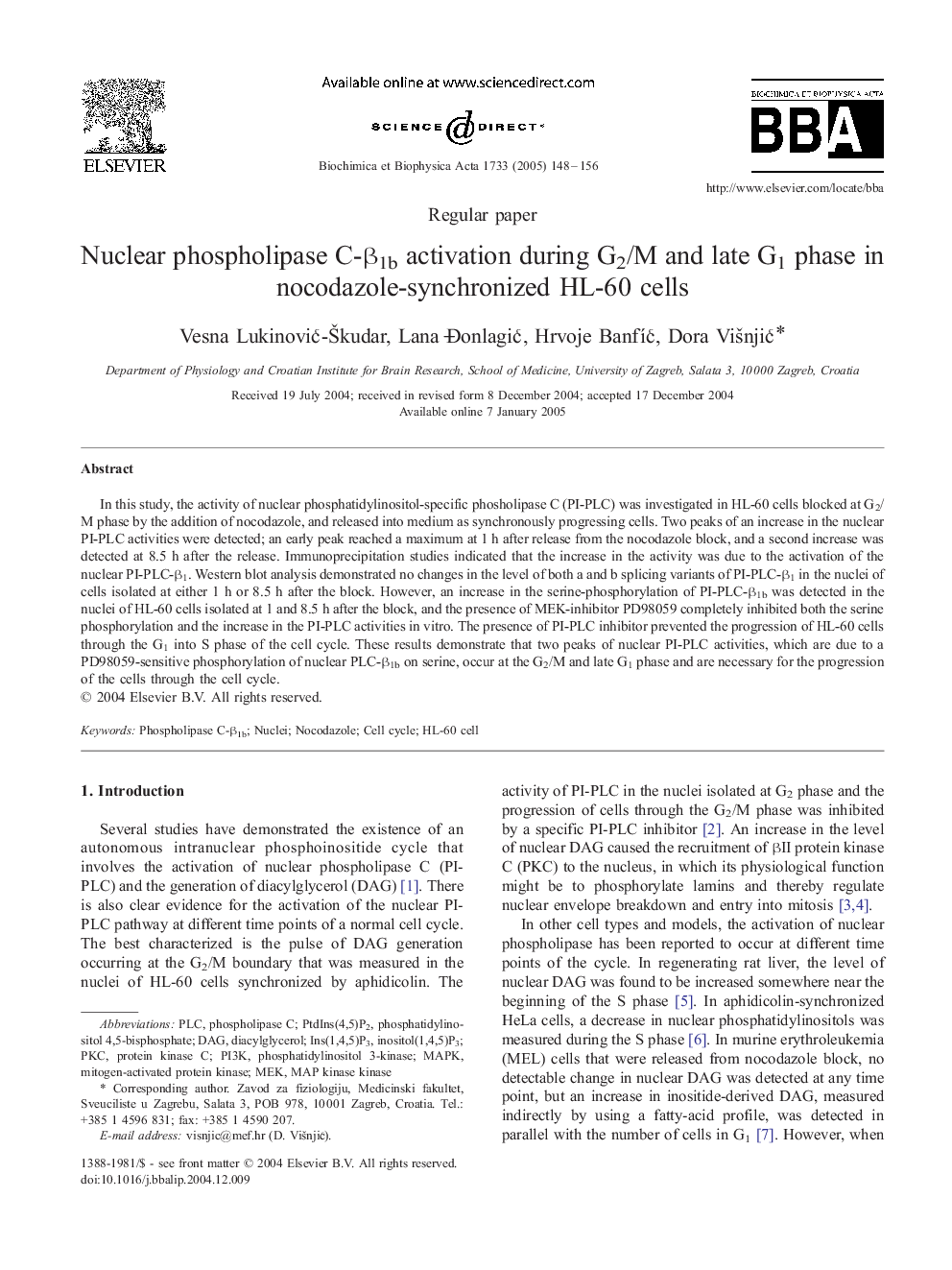| Article ID | Journal | Published Year | Pages | File Type |
|---|---|---|---|---|
| 9886591 | Biochimica et Biophysica Acta (BBA) - Molecular and Cell Biology of Lipids | 2005 | 9 Pages |
Abstract
In this study, the activity of nuclear phosphatidylinositol-specific phosholipase C (PI-PLC) was investigated in HL-60 cells blocked at G2/M phase by the addition of nocodazole, and released into medium as synchronously progressing cells. Two peaks of an increase in the nuclear PI-PLC activities were detected; an early peak reached a maximum at 1 h after release from the nocodazole block, and a second increase was detected at 8.5 h after the release. Immunoprecipitation studies indicated that the increase in the activity was due to the activation of the nuclear PI-PLC-β1. Western blot analysis demonstrated no changes in the level of both a and b splicing variants of PI-PLC-β1 in the nuclei of cells isolated at either 1 h or 8.5 h after the block. However, an increase in the serine-phosphorylation of PI-PLC-β1b was detected in the nuclei of HL-60 cells isolated at 1 and 8.5 h after the block, and the presence of MEK-inhibitor PD98059 completely inhibited both the serine phosphorylation and the increase in the PI-PLC activities in vitro. The presence of PI-PLC inhibitor prevented the progression of HL-60 cells through the G1 into S phase of the cell cycle. These results demonstrate that two peaks of nuclear PI-PLC activities, which are due to a PD98059-sensitive phosphorylation of nuclear PLC-β1b on serine, occur at the G2/M and late G1 phase and are necessary for the progression of the cells through the cell cycle.
Keywords
Related Topics
Life Sciences
Biochemistry, Genetics and Molecular Biology
Biochemistry
Authors
Vesna LukinoviÆ-Å kudar, Lana ÄonlagiÆ, Hrvoje BanfÃÆ, Dora ViÅ¡njiÆ,
